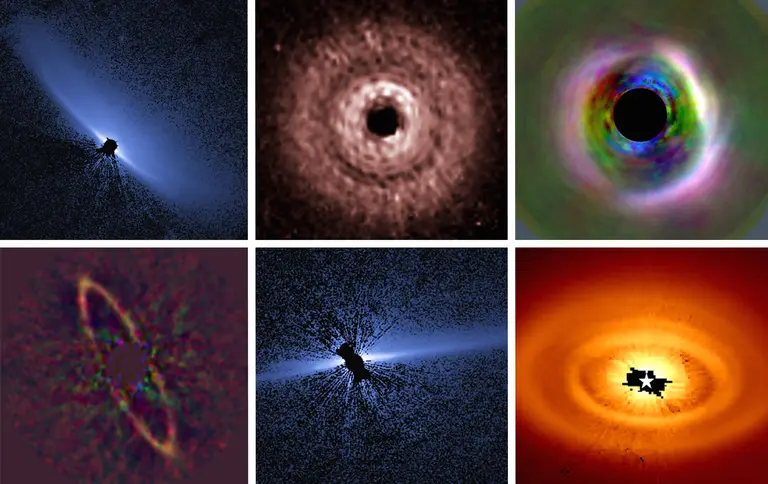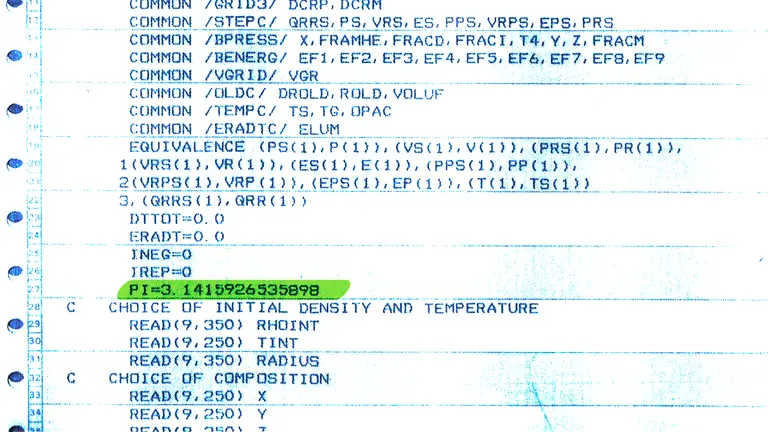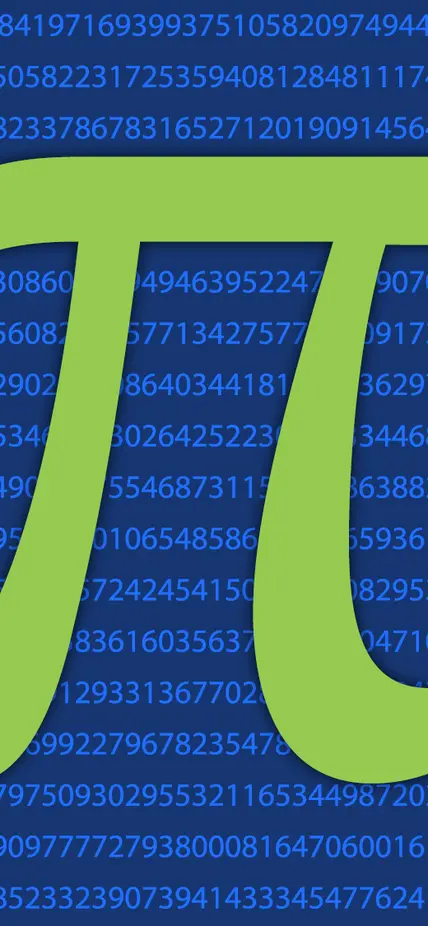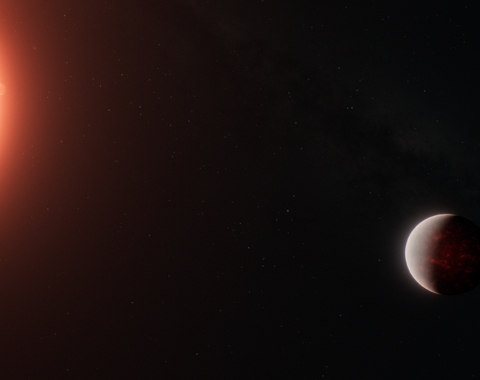As essential as air

Anything round requires pi—from studying the elliptical orbits of distant worlds to modeling the interiors of planets.
EPL astrophysicist Alycia Weinberger is just one scientist who depends on pi. She explained, "Pi is so integral to everything I do, it's like air—happily it's there for me, and I don't have to think about it. Anything involving a circle or sphere or ellipse or any kind of curvature brings in pi." She continued, "That includes orbits of planets around stars or stars around each other (ellipses), the intrinsic and observed shapes of circumstellar disks (ellipses), the volume or mass of dust grains we see around stars (estimated as the sum of spheres of a certain density), the densities of planets (spheres), and how we actually do astronomy since the sky appears to us as a sphere above the Earth."
Similarly, EPL astrophysicist John Chambers stated, "On large scales, nature is controlled by gravity, and the pull of gravity likes to make things round. My research on planet formation uses round shapes all the time. Think of planets themselves which are nearly spherical or protoplanetary disks of gas and dust which are more-or-less circular. Pi is essential every time you calculate the area or volume or mass of something round. I probably use Pi more than almost any other number."
On a more geodynamic side of things, pi can be extremely useful for modeling the interiors of planets. Carnegie Postdoctoral Fellow Nathan Sime stated, "I try to make my computational simulations as efficient as possible. To do this I slice up the Earth like a pie. And those slices are all convenient fractions of pi, so I can preserve symmetry." He joked, "So, I suppose my method for keeping myself and my computations slim is to slice up fractions of pi/e!"
How many digits of pi do actually you need?

Despite the endless digits of pi, most simple calculations only need a few of its infinite digits.
EPL astronomer John Chambers explains, "Pi goes on forever, but almost all computer calculations only ever use the first 16 digits of pi." He continued, "That is more than enough accuracy for most problems in the real world."
Using pi all the time means some scientists learn the first handful of digits by heart. Carnegie astrophysicist Alan Boss remembers being particularly impressed when his professor could identify out-of-place digits of pi to the eighth decimal place, inspiring Boss's own pi memorization efforts!
Boss recounts, "I was attending a seminar as a Physics Department graduate student at U.C. Santa Barbara in 1974 when Professor Hal Lewis stopped the speaker and noted that the value of pi on the screen was incorrect in the eighth decimal place. It blew me away that someone would know the value of pi to that many decimal places. Most think pi = 3.14 or so and leave it at that. Professor Lewis later advised me that my Ph.D. thesis project was premature because computers were not yet fast enough to be able to calculate the three-dimensional hydrodynamical models of binary star formation that I was developing."
He continued. "I ignored his advice about my thesis project but never forgot his ability to remember the value of pi. Because my computer code used "double precision" arithmetic, my code used the fourteen-digit value of pi = 3.1415926535898, and I memorized those fourteen digits, hoping to get a chance one day to pull the Professor Lewis stunt on a speaker. No luck, so far!"



